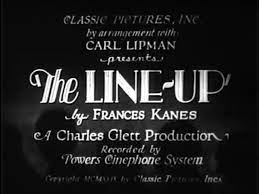
Edward Farron (William Black) and his fiancé, Alyce Vernon (Viola Richard), own a nightclub called Club Boulevard. It is prohibition and the club has been experiencing a lull since they don’t serve booze and refuse to turn the place into a speak-easy.
Edward is approached by a man named Johnson (Charles Slattery). Johnson wants to hire Edward to deliver a letter to a man named Bum Chiggers (Jack Irvin). He offers Edward five thousand dollars to deliver the envelope. He gives Edward two thousand up front and promises to pay the balance after the job is done. Edward is a little skeptical but five thousand would go a long way to help him get his business rolling. He agrees. Edward delivers the envelope.
What Edward doesn’t know is that Johnson is really a crooked cop named Detective Parks (Charles Slattery) and that the money in the envelope is payment to a hit man. The instructions in the envelope tell Chiggers to kill a guy named Whitey Harris. Whitey has been paying Parks protection money. Whitey is tired of paying Parks and wants out. He threatens to go to Park’s bosses. Chiggers kills Whitey. The police capture the hit man who immediately tells them that Edward was the one who gave him the envelope. Edward is arrested and put in a line-up.
“The Line-Up” was released in 1929 and was directed by Charles L. Glett. It is an American poverty row early talkie crime short and is about 24 minutes long. The film is difficult to fine and quite obscure.
The short was intended to be part of a series of short films by the now defunct “Classic Pictures”. The filmmakers had planned on producing twelve shorts using the Powers Cinephone Sound Process but, as far as I know, this was the only one done.
The film includes a written prologue that basically explains everything known about the film. The prologue was written by Geno R. Cuddy in 2020. According to Cuddy, and fellow researcher Richard Finegan, “The Line-Up” was considered a lost film. Eventually, the only known print of it was acquired by Raymond Cabana. Supposedly, the private collector who owned it thought it was an episode of a television program that had the same name.
It was an interesting little tidbit in the area of early talkies. Although it is considered a talkie it is actually one of the early hybrids that were part silent and part talkie. The sound gets a little hinky in places and the silent parts are really silent. It also has a couple intertitles in the silent portion. Nowadays the film would be called experimental since, at that time, filmmakers were relearning how to make films with sound and discovering new ways to mix sound and picture together.
The film is a bit silly and overdramatic but at only 24 minutes it’s kinda fun. It is worth at least a quick look and definitely worth saving.

